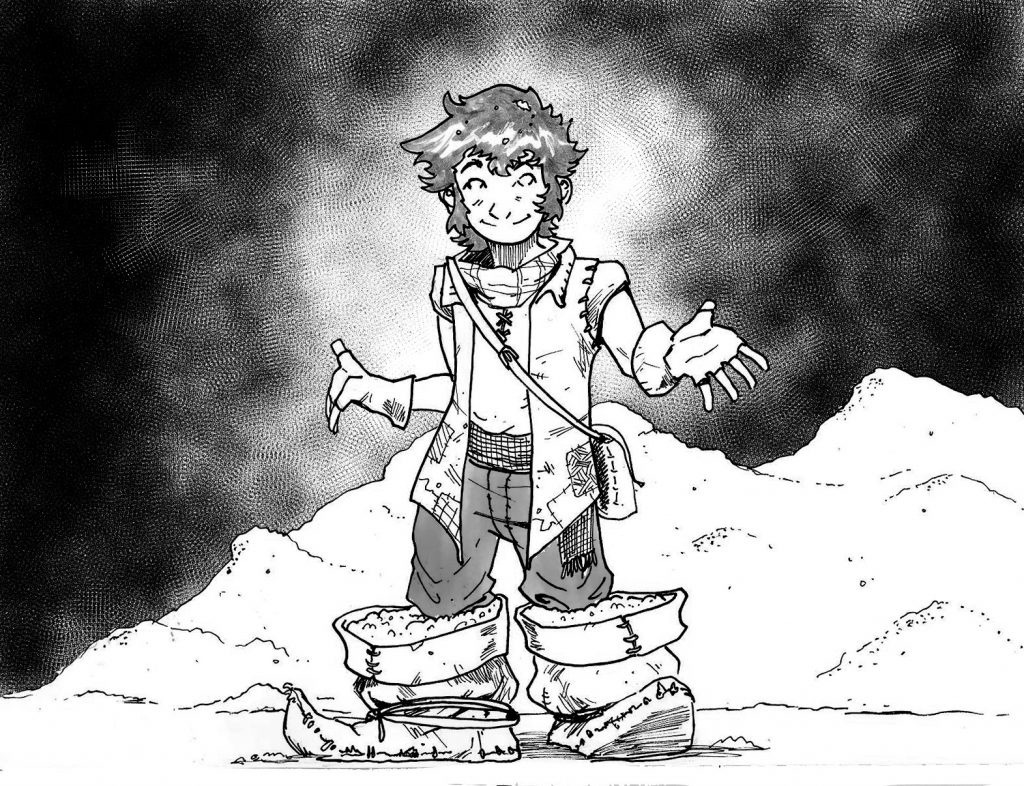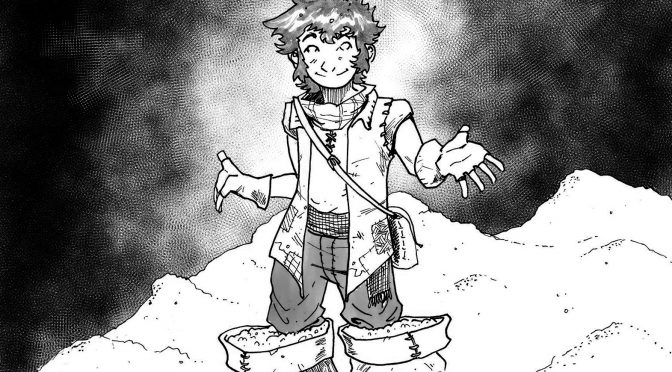Lots of stories describe how humans discovered the elements of civilization. We have fire because Prometheus was able to steal it from the gods. And such stories about the theft of fire are particularly common, with Rabbit or Coyote stealing fire in the Americas, Prometheus stealing it for the Greeks, and Pkharmat of the Vainakh peoples bringing fire to humankind. And it isn’t just fire. The Hebrew Book of Enoch tells of the fallen angel Azazel teaching people, amongst other things, the ways of metalsmithing. All around the world, there are stories of characters that help civilize people, that teach us how to tame nature. For the Basques, this hero is San Martin Txiki.

- San Martin Txiki was the first to bring wheat to people. He climbed up to a cave where the Basajaunak, who knew how to cultivate wheat, lived. He bet them that he could jump over their piles of wheat more gracefully than they could. Of course, they jumped over the piles with ease and grace, not touching a grain of wheat. When San Martin Txiki jumped, he fell in the middle of the pile. But, he had worn extra large boots that filled up with grains of wheat when he fell in the pile, which he then brought back to the people.
- Similarly, he tricked the Basajaunak to learn to make a saw. The Basajaunak already knew the secret of making a saw. San Martin Txiki had his servant announce to the Basajaunak that he too had made a saw. Bewildered, they asked if he had seen the leaf of a chestnut tree as inspiration. The servant replied no, but conveyed this information to San Martin Txiki who was then inspired to make a saw. The Basajaunak snuck in at night to see Txiki’s work and tried to destroy the new saw by bending the teeth back and forth, but this actually made the saw better.
- He did the same thing to learn how to solder iron, by having his servant announce that he had done so and then having the Basajaun naively reveal the secret: sprinkle clay water on the iron. In some stories, it is the Devil that he tricks, not the Basajaun, as when he learned (again, via his servant) that he needed the sturdy alder as a shaft in his mill, not the weaker oak.
- In Basque mythology, it is rare to have stories about saints, where saints are the hero. Those stories that do exist revolve around a saint helping locate a hermitage. The stories about San Martin Txiki are the only ones featuring a saint-hero. The other element of his stories that is unique is the special role of the Basajaunak. Usually, they are depicted as wild men linked to nature, not to agriculture and industry. That is, most of the time, they are more wild than humans, not less. That they play this role of being civilized in these stories suggests a more complex origin.
- Further, the stories of San Martin are unique to Europe. While one might be tempted to look at the Greek stories of Prometheus as potentially connected, that hero stole from the gods and was punished for it. San Martin Txiki stole from the local wild men and was never punished. One possible connection that explains all of the curious attributes of San Martin Txiki is with Scandinavian mythology.
- In Scandinavian mythology, giants are not simply dumb brutes who terrorize humans, as they are in, for example, Celtic mythology. They are ingenious but naive, masters of technology but easily tricked. Further, one of the Norse gods, Thor, always has servants in tow when interacting with the giants, be it Loki or Thialfi. It is often Loki or Thialfi that trick the giants so that Thor can best them, in much the same way that San Martin Txiki uses his servants. This doesn’t prove that the stories of San Martin Txiki have a Norse origin, but this is the best link between those Basque stories and any others in Europe. So maybe San Martin Txiki is an ancient Basque-ization of Thor, or maybe Loki. Or maybe it is the other way around?
Primary source: Hartsuaga Uranga, Juan Inazio. San Martin Txiki. Enciclopedia Auñamendi, 2020. Available at: http://aunamendi.eusko-ikaskuntza.eus/es/san-martin-txiki/ar-114042/
Discover more from Buber's Basque Page
Subscribe to get the latest posts sent to your email.



One thought on “Basque Fact of the Week: San Martin Txiki, the Basque Trickster”